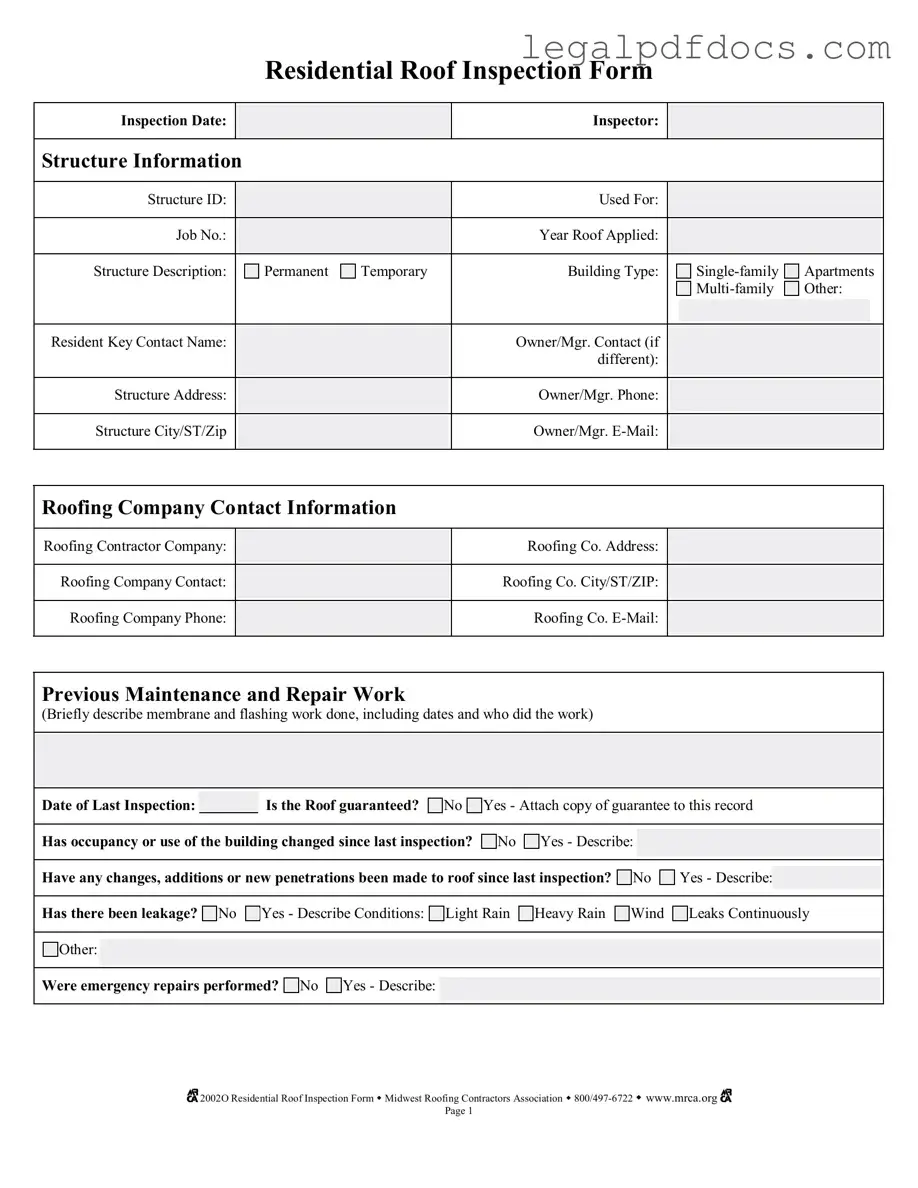The Roof Inspection form serves as a comprehensive tool designed to assess the condition of residential roofs, ensuring that they remain safe and functional over time. This form includes essential details such as the inspection date, the inspector's name, and information about the structure, including its ID, purpose, and type. Contact information for the owner or manager is also gathered, along with data about the roofing contractor responsible for maintenance. Key sections of the form focus on previous maintenance and repair work, detailing any significant changes since the last inspection, including the presence of leaks or emergency repairs. Condition ratings categorize various aspects of the roof—from the interior roof deck to exterior walls and drainage systems—using a simple code system that indicates whether conditions are good, fair, or poor. The form encourages thorough documentation of any issues, including photographs and descriptions of specific problems like cracking, corrosion, or water stains. By systematically evaluating these factors, the Roof Inspection form helps property owners and managers make informed decisions regarding necessary repairs and maintenance, ultimately prolonging the lifespan of the roof and safeguarding the integrity of the building.
